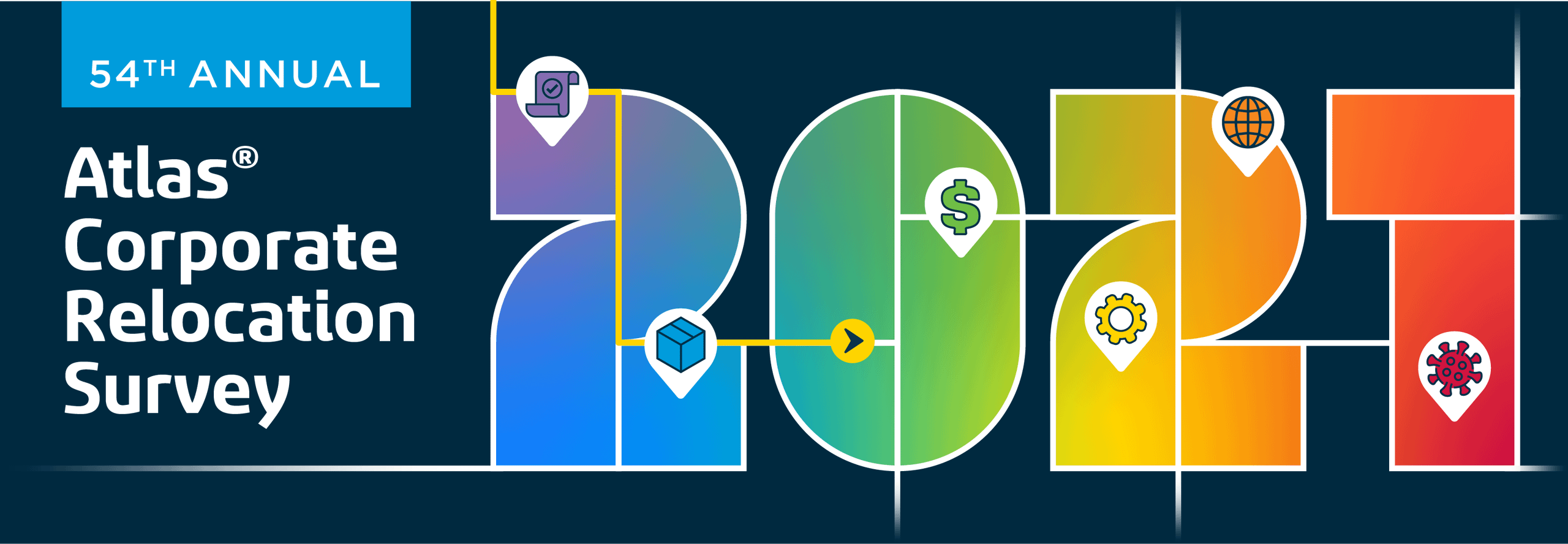.png)
Who Responded?
Invited via email, 444 decision-makers completed an online questionnaire between January 15 and February 22. Each respondent has responsibility for relocation and is employed by a company that has either relocated employees during the past two years or plans to relocate employees this year.
For analysis, firms are categorized by size:
SMALL
Fewer than 500 salaried employees (36 percent)
MID-SIZE
500-4,999 salaried employees (36 percent)
LARGE
5,000+ salaried employees (29 percent)
46 percent work in firms that relocate employees internationally.
Relocation Volume & Budgets
In general, 2018 was positive for the relocation industry; roughly nine out of ten organizations indicate both volumes and budgets either held steady or increased. Projections for 2019 are similarly optimistic. Among firms relocating employees internationally, 48% saw increases in international volumes last year and 47% expect increases in 2019. Around one-seventh of firms saw decreased volumes last year and expect decreased international activity in 2019. While projected increases appear to outpace decreases roughly three-to-one, Brexit looms as a wild card. One-fifth of firms moving employees internationally are unsure of Brexit’s impact on 2019 volumes.
Tax Reform’s Impact
The passing of the U.S. Tax Cuts and Jobs Act eliminated the moving-expenses deduction for 2018-2025. We incorporated additional questions to assess the potential impact of this bill last year and we continue to investigate it.
Tax Reform's Impact – Number of Relocations Performed
Number of relocations performed.png)
- When survey respondents in early 2018 considered the law’s potential impact, the picture was highly uncertain. However, the data shows a positive impact, with higher relocation volumes rather than negative. This was most strongly expected and reported among mid-size firms, followed by small. Gains and losses essentially zeroed out for large firms, making the overall impact negligible for them.
- Looking toward 2019-2025, projections across company size shift in favor of increases. Around a third of firms project greater volumes, compared to roughly one out of seven projecting a decrease.
Tax Reform's Impact – Relocation Admin Complexity
.png) Complexity of relocation administration
Complexity of relocation administration
- Around four out of ten firms expected increases in the complexity of administration in 2018. Data showed their projections were spot on.
|
4 out of 10 firms expected increases in the complexity of administration in 2018.
|
Tax Reform's Impact – Relocation Costs
.png) Relocation costs
Relocation costs
- Around half of organizations expected the law to cause an increase in relocation costs in 2018, and their expectations were realized. Projections among mid-size and large firms were spot on; small firms report more increases than projected (42% vs. 31%).
- Essentially half or more of firms across company size expect increased costs in 2019-2025. Very few expect tax reform will save them money; they see it is costing them more and expect it will continue to do so.
Tax Reform's Impact – Relocation Policy Changes
.png) Relocation policy changes
Relocation policy changes
- Roughly four out of ten firms expected relocation policy changes in response to tax reform in 2018. Expectations essentially became reality.
- More mid-size and large firms felt this would be the case than small firms, and their expectations proved true. More than a third (37%) of large firms and almost half (47%) of mid-size firms made changes last year because of tax reform. Just 28% of small firms did so.
- While a third of firms overall expect additional policy adjustments during 2019-2025, such anticipation is greatest among mid-size firms (45%).
| 4/10 firms expected increases in relocation policy changes | Not only is tax reform making relocation more expensive and administratively complex, policy changes are still evolving in response to it. |
Tax Reform's Impact – Difficulty Recruiting Employees
.png) Difficulty recruiting employees to relocate
Difficulty recruiting employees to relocate
- Overall, around half of organizations expected the law to have no effect on the difficulty to recruit employees in 2018; around half reported the same as well as similar expectations for 2019-2025.
- However, the impact was dissimilar across company size: 36% of mid-size firms experienced greater recruiting difficulty, followed by 30% of small firms. Large firms felt the impact least (21%).
- Expectations for 2019-2025 are similar: mid-size firms project more difficulty (42%), followed by small (34%), with large firms the least likely (27%) to expect greater difficulty in recruiting employees.




